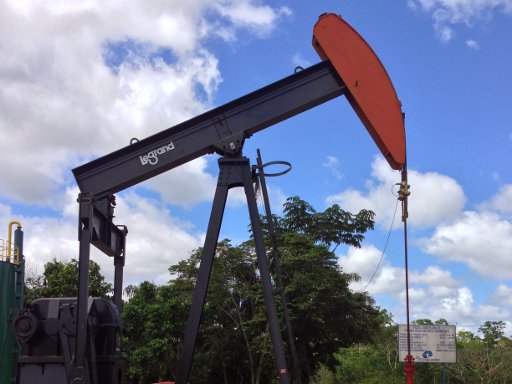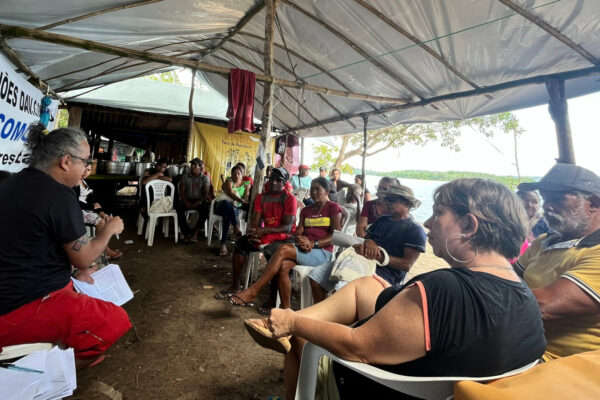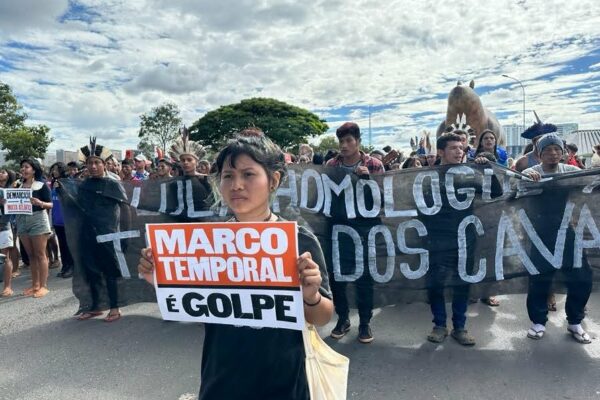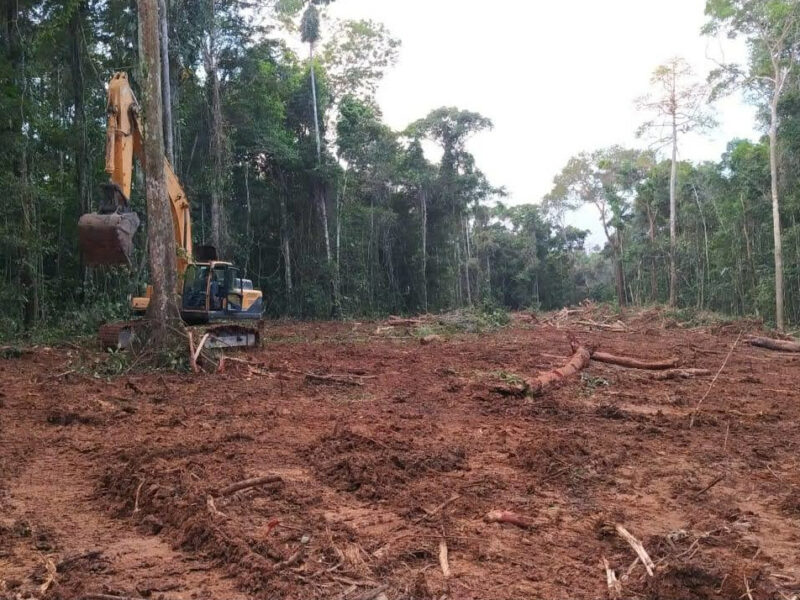
Tar sands, hydraulic fracking, deep water drilling. All are examples that we are living in the age of extreme oil. With most major reserves of traditional crude found or tapped, the industry is encroaching into some of the most geologically-complicated, environmentally-risky and socially-conflictive terrain than ever before. As the price of crude hovers at $100, companies are eager to get at what was once impossible crude, much to the peril of people and the planet.
In some cases, this means pursuing non-conventional sources of oil, once technologically or financially out of reach, but now lucrative, despite being more energy intensive to extract than the final crude produced. In other cases, this means attempting to access “shut in” reserves – oil fields trapped by local resistance or above-ground ecological importance.
There is no greater example of this clash than what is playing out in the forests of Ecuador’s Amazon. There is a new oil boom underway, fuelled by the country’s rising debt, China’s energy demands, Ecuador’s leftist government’s plans to finance its “citizen’s revolution”, and the massive increase in public spending with expanded drilling.
Ecuador’s Amazon is indigenous territory, with nationalities in the northern forests still reeling from the impacts of the oil industry after some 40 years of drilling and dumping practices by Chevron. Meanwhile, indigenous groups in the southern rainforest region have been waging a campaign of resistance to new drilling since the 1990s. Much of the conflict arises from the fact that while indigenous groups might have land title to their territories, the subsurface mineral rights belong to the state.
Ecuador’s oil reserves are set to peak in 2015, and crude is currently about 60% of its export earnings. This, combined with a whopping $9 billion debt to China – much of which must be paid in crude – pushed the government to offer up 13 new oil blocks for tender, which overlap territory of seven indigenous nationalities. The round was met with protests everywhere the government sought investment for the oil blocks , including in Quito, Houston, Paris and Calgary. The 11th oil licensing round, as it is known, was delayed several times due to lack of interest, and is speculated to have cost former Ecuadorian Minister, Wilson Pástor, his job. Ultimately, the round resulted in offers for only four blocks, far short of expectations. However, the government has stated it will seek to drill in the nine other blocks that didn’t receive bids, setting the stage for a major conflict with indigenous groups like the Kichwa, Achuar, Shuar, Sapara, and Shiwiar, who continue to oppose oil extraction and defend their lives, lands and culture.
Ecuador’s constitution only requires free, prior informed consultation, putting itself on the wrong side of growing international standards, as well as of some companies and shareholders. But even the government’s plan to merely consult local populations has been widely dismissed as a “fraud” by indigenous leaders. “It is nothing more than a sham,” according to Humberto Cholango, president of the powerful indigenous confederation, CONAIE, which is known for ousting presidents and thwarting free trade agreements. “The government has never properly consulted the people who will be affected by these projects,” continued Cholango. A 2013 documentary, La Consulta Inconsulta, chronicles the government’s alleged efforts, and clearly shows a process that violates both Ecuadorian and international law. The consultation is not only legally mandatory, but for many companies it is a critical component of whether their projects will be successful, and to what extent they can justify their incursion into fragile and culturally-sensitive forests to their shareholders.
Without real, legitimate buy-in from local groups, companies in Ecuador have seen their projects paralyzed by protest, with most forced to declare force majeure and ultimately abandon projects. For many major investors, this social license to operate has become increasingly important, with shareholders demanding indigenous rights’ policies, explicitly calling for not just consultation, but consent of local communities. This is clearly enshrined in the UN Declaration on Indigenous Peoples, and affirmed by decisions by the Inter-American Human Rights Court in Saramaka v. Suriname and Sarayaku v. Ecuador.
Much of the reason for the steadfast resistance in Ecuador’s southern rainforests is a result of Chevron’s toxic legacy of impacting indigenous and campesino communities further north. While drilling there from 1964 to 1990, Texaco – which merged with Chevron in 2001 – deliberately dumped more than 18 billion gallons of toxic wastewater, spilled roughly 17 million gallons of crude oil, and left hazardous waste in hundreds of open pits dug out of the forest floor. To save money, Texaco chose to use environmental practices that were obsolete, did not meet industry standards, and were illegal in Ecuador and the United States. The result was, and continues to be, one of the worst environmental disasters on the planet. Contamination of soil, groundwater and surface streams has caused local communities to suffer a wave of mouth, stomach and uterine cancer, birth defects and spontaneous miscarriages. Chevron never cleaned up the mess it inherited, and its oil waste continues to poison the rainforest ecosystem.
Some 300 miles of roads that Texaco and the Ecuadorian government built served as arteries into indigenous lands – an open invitation for colonization and agroindustrial development. Today, the five indigenous nationalities most affected, the Cofan, Secoya, Siona, Kichwa and Waorani, have all seen the drastic reduction of their territory and the decline of their ancestral traditions . They have been pushed from a sustainable, self-sufficient lifestyle to a Western cash economy in a matter of decades. African palm plantations dominate the region, and many of the communities still suffering from Chevron’s unremedied issues have signed new oil agreements with incoming Chinese firms and Ecuador’s own state run, Petroamazonas. Despite promises of best practices, the country averaged 539 spills between 2000 and 2010, according to the BBC.
There is no easy solution for Ecuador to get off of oil, but claims that the country can drill its way to prosperity have fallen short since oil was discovered in the late 1960s. While the government may be putting oil revenues to better use than past administrations and improving basic services for urban and rural poor, it’s coming at great cost – the biodiversity of some of the world’s most important forests and violations of the rights of its people. And, if history is any guide, new poverty and dependence on the state is being created in areas that were self-sustainable, all the while eroding more sustainable economic revenue sources like tourism. In addition, the government has been cracking down on civil society groups and indigenous leaders who have challenged the government’s future drilling plans, as seen by the recent closure of the NGO, Fundación Pachamama.
Ecuador did explore a way out of its dependence on oil, offering to keep its largest oil fields that lie beneath Yasuní National Park permanently in the ground in exchange for international collaboration to help offset the country’s forgone revenue. Yasuní National Park is widely known as one of the most biodiverse places on the planet, and home to two indigenous groups living in voluntary isolation. The initiative, known as the Yasuní-ITT, was ultimately scrapped after little international support materialized – an embarrassing showing for Annex I countries supposedly concerned about climate change. Furthermore, government mismanagement of the proposal caused an insurmountable credibility gap.
As the oil industry and governments pursue crude reserves in the extreme far corners of the Amazon, these roadless, pristine swaths of forest and indigenous lands are on the chopping block. Yet, oil has not lived up to the mythical economic panacea for most countries in South America, and Ecuador is no exception. Until the demand for extreme crude decreases – whether from the tar sands of Canada, the deep waters of the Gulf of Mexico, or the far reaches of the Amazon – the conflict between rights and resources will continue, at the expense of indigenous peoples, the forest and our planet.














